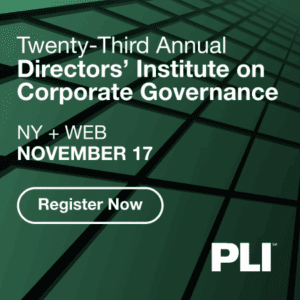The AI regulatory race is heating up, but clear legal guidelines remain elusive — leaving organizations to navigate innovation without a roadmap. Asha Palmer, senior vice president of compliance solutions at Skillsoft, does not accept this as an either-or proposition, outlining how companies can build their own governance frameworks, break down departmental silos and invest in transparency practices that prepare them for whatever regulations emerge.
The race to regulate AI is heating up, as governments, industry leaders and global organizations strive to balance innovation with addressing potential risks. In a major step forward, the White House has introduced an updated framework to guide federal agencies in adopting and managing AI technologies. This new strategy signals a shift toward fostering innovation by reducing bureaucratic hurdles, promoting competition and embracing cutting-edge AI advancements. At the same time, it emphasizes the importance of responsible implementation to ensure ethical use.
While the US has taken a pro-innovation stance, it still lags behind the European Union, which implemented its AI regulations earlier this year. Without clear legal guidelines, organizations in the US face the challenge of driving innovation while staying prepared for future compliance requirements. To succeed, companies need a proactive approach to AI development and use — building transparent, adaptable risk mitigation and management strategies and fostering collaboration across functions and teams. Empowering employees to spearhead innovation while prioritizing ethical AI practices will be critical in navigating this uncharted territory.
Leadership will be the linchpin of responsible AI adoption. Leaders must guide their organizations through the intertwined challenges of advancing technology, evolving regulations and ethical considerations. As AI transforms industries at breakneck speed, strong leadership can provide the clarity and strategy needed to seize opportunities while upholding a commitment to responsible AI use. Now is the time to lead with purpose and prepare for the future of AI.
Design and implement internal AI policies
As local and international regulations evolve, businesses must create adaptable internal policies to stay compliant. Establishing a clear governance framework and well-documented processes for AI use is critical for ensuring compliance, auditability and ethical accountability.
- Forward-thinking organizations are addressing key questions, including:
- How do our AI systems safeguard sensitive data and protect user privacy?
- What measures are in place to detect and mitigate algorithmic bias?
- How do we ensure AI decisions are transparent and explainable to stakeholders?
- How can we navigate new or conflicting regulations across different regions?
- Is our AI compliance program robust enough to address risks within our supply chain, vendors and third-party partnerships?
- How are we training employees to understand and align with emerging AI ethics and compliance standards?
By proactively tackling these challenges with familiar governance structures and controls, companies can stay ahead of regulatory demands while fostering responsible AI practices, building trust with customers, and driving innovation.
Regulation vs. Innovation: The Tug-of-War Defining Finance’s Future
AI compliance creates a global patchwork where EU fines reach €35 million while the US encourages growth — leaving financial firms navigating contradictory rules
Read moreDetailsFoster collaboration and dismantle silos
Organizations must prioritize responsible use by establishing structures like ethics boards or committees to oversee AI deployments and regularly review policies and procedures.
For innovation to thrive, collaboration across functions is essential. AI responsibility shouldn’t fall on a single person or department. Instead, it requires input from compliance, legal, IT, marketing and product management teams, to name a few. Breaking down silos fosters a more comprehensive understanding of how departments and certain parts of the business may be impacted, ensuring the compliance program is fit for purpose and aligns with the organization’s innovation strategy and regulatory requirements. Cross-departmental task forces and internal discussion forums can help these groups be agile and responsive to both the changing use cases and regulatory trends.
Collaboration doesn’t stop internally. Partnering with external stakeholders, like AI vendors, consultants, academic researchers and industry experts, amplifies the governance framework’s comprehensiveness. These collaborations provide valuable insights into possible vulnerabilities as well as areas to strengthen controls. By working together, organizations can design AI strategies that are both innovative and compliant with regulations. This shared responsibility strengthens trust, supports ethical AI integration and ensures businesses remain forward-thinking while aligning with industry advancements.
Prioritize transparency and ethical practice
Transparency is the foundation of trust, both within the organization and in its external relationships. Leaders should cultivate a culture of openness by sharing how AI models are developed, tested and deployed — with their employees and with the world. Regular reporting, open lines of communication and transparent decision-making processes allow teams to identify risks early and reinforce accountability at every stage. This transparency not only will satisfy regulators but also reassures a company’s external stakeholders that innovation is pursued responsibly.
But it’s not just that you communicate; it’s what you communicate that matters. Organizations must show that they are aware of potential risks associated with their AI systems and have measures in place to mitigate them. This could include conducting regular risk assessments, implementing security protocols and continuously monitoring performance. Establishing feedback mechanisms and regular audits to assess the effectiveness of an AI compliance programs an communicating the corrective or productive actions that arise as a result can demonstrate agility and adaptability in this ever-changing landscape of AI
Training and continuous learning
As AI becomes more integrated into decision-making and operations, comprehensive training on responsible and ethical AI practices is essential. Organizations need to assess workforce AI competency through skill assessments and tailored evaluations, identify gaps and ensure training aligns with specific roles and associated risks. A targeted approach — such as role-based, activity-based and risk-based learning — helps employees gain relevant knowledge, whether it’s data privacy for sensitive roles or bias mitigation for decision-makers. This strategy not only enhances AI literacy, AI risk mitigation and compliance but also promotes the responsible use of AI to address evolving challenges effectively.
Continuous learning is equally critical for organizations looking to stay competitive and innovative in today’s rapidly changing world. By fostering a culture that encourages employees and leaders to develop new skills, embrace emerging technologies and adapt to evolving methodologies, organizations can drive both individual and collective growth. Prioritizing training programs, workshops and access to up-to-date industry resources ensures teams are prepared to tackle challenges and capitalize on new opportunities.
Navigating the road ahead
Empowering innovation, ensuring regulatory compliance and building digital resilience are not mutually exclusive goals. By designing robust internal governance frameworks, encouraging collaboration, maintaining transparency and investing in talent and learning, organizations can lead the way in responsible innovation, even as the global compliance landscape shifts for AI. How prepared is your organization to balance these priorities in a landscape where the only constant is change? Now is the moment to align your compliance strategies, innovation ambitions and resilience plans — for the benefit of your teams, your stakeholders and the communities you serve.




 Asha Palmer is Skillsoft’s senior vice president of compliance solutions. Throughout her career, Asha has developed, enhanced and optimized effective ethics and compliance programs for hundreds of companies worldwide. As a former assistant U.S. attorney and litigator, Asha is extremely passionate about making training & engagement stick and be meaningfully embedded in and with business and its leaders.
Asha Palmer is Skillsoft’s senior vice president of compliance solutions. Throughout her career, Asha has developed, enhanced and optimized effective ethics and compliance programs for hundreds of companies worldwide. As a former assistant U.S. attorney and litigator, Asha is extremely passionate about making training & engagement stick and be meaningfully embedded in and with business and its leaders. 







